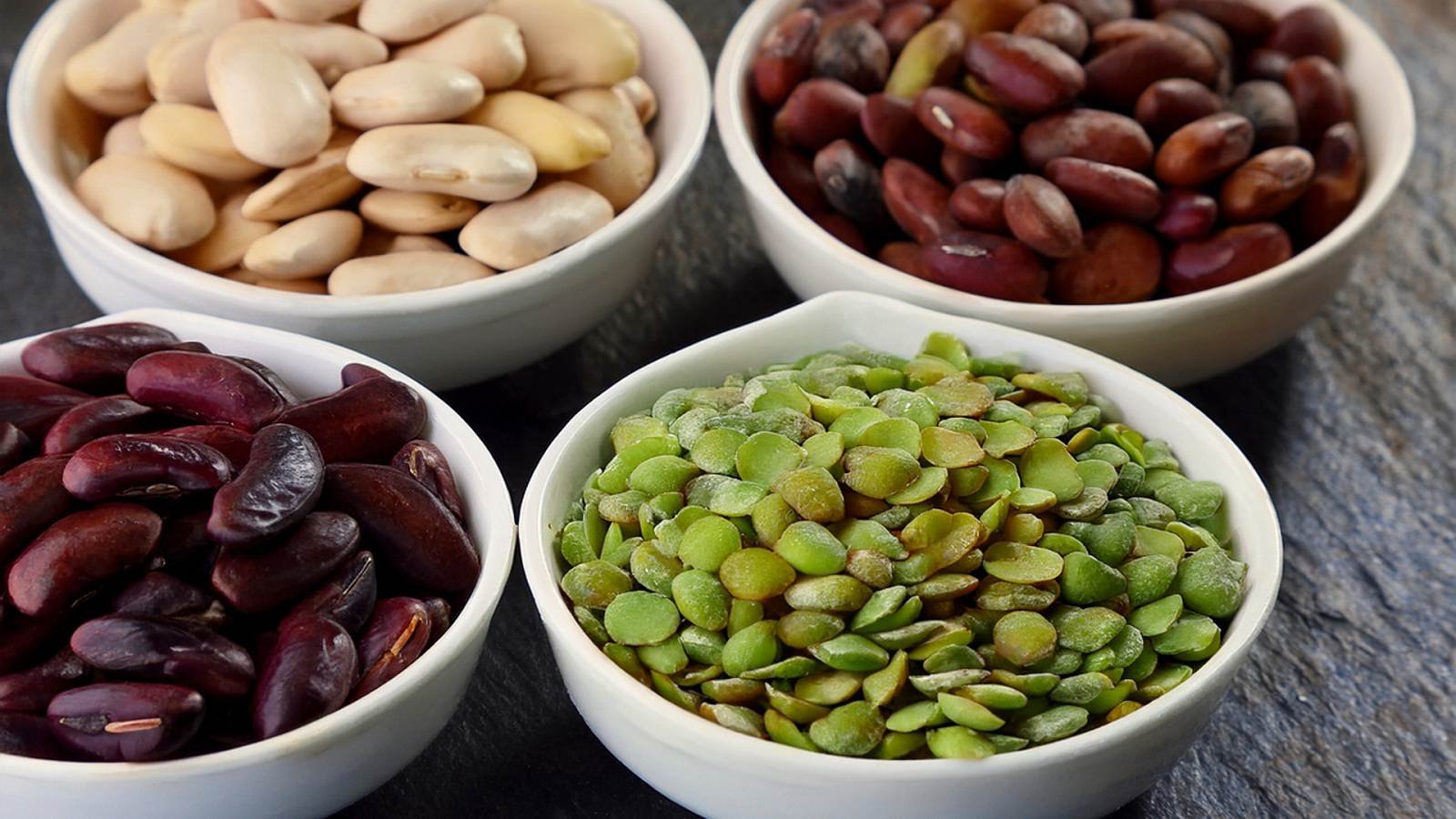Boost Your Crops the Natural Way
Farming today comes with big challenges – rising input costs, tired soils, and the need to farm in more sustainable ways. But what if there was a natural, low-cost way to grow healthier crops, improve your soil, and boost yields using nitrogen fixing bacteria?
Good news: there is.
Nitrogen fixing bacteria are tiny but powerful microbes that work with legume crops like faba beans, peas, and soybeans to pull nitrogen from the air and feed your plants – naturally. These friendly bacteria help crops grow stronger, boost yields, and reduce the need for artificial fertilisers.
That’s exactly what FabaStym is designed to do.
What if your crops could fertilise themselves – straight from the air?
With the help of nitrogen fixing bacteria and FabaStym, legumes like faba beans and peas can grow stronger, yield more, and leave your soil healthier than before. All without bags of synthetic fertiliser. Here’s how to make nature do the heavy lifting on your farm.👇
FabaStym is a range of natural biopreparations (think: probiotics for your soil) that help nitrogen fixing legumes perform at their best. It supports the special relationship between roots and symbiotic bacteria, helping your crops grow more efficiently while restoring long-term soil health.
👉 In this blog post, you’ll learn:
- What nitrogen fixing bacteria are – and why they matter
- How legumes like faba beans help fix nitrogen in your soil
- What makes FabaStym different from other treatments
- How to use it for better yields and stronger soils
- Why farmers are switching to biological solutions that work with nature
Whether you’re trialling regenerative practices or looking to reduce fertiliser costs, this post will show you how FabaStym and nitrogen fixing bacteria can help you grow better – naturally.
KEY FACTS
1. Nitrogen fixing bacteria turn air into fertiliser – giving legumes like faba beans and peas the boost they need to grow naturally.
2. FabaStym supercharges this process – helping your crops fix up to 500kg of nitrogen per hectare, with no synthetic fertilisers needed.
3. Bigger yields, stronger plants – thanks to early root nodulation and improved nutrient uptake.
4. Lower input costs – reduce your dependency on artificial fertilisers and save money with every planting.
5. Soil gets healthier, year after year – FabaStym acts like a probiotic for your soil, supporting microbial life and long-term fertility.
6. Perfect for sustainable and regenerative farming – easy to use, eco-friendly, and safe for organic systems.

Why Soil Health and Nitrogen Matter in Modern Farming
Soil isn’t just the stuff plants grow in – it’s a living system full of microbes, nutrients, and organic matter. When it’s healthy, it supports strong root growth, helps plants absorb nutrients, and holds water better during dry spells.
But here’s the problem: modern farming methods have taken a toll.
Years of heavy fertiliser use, deep tilling, and monocropping have damaged soil structure, reduced biodiversity, and made it harder for crops to get what they need to thrive. That’s why soil health is now one of the most important factors in farming success.
💡 Why nitrogen is a big deal
Nitrogen is a key nutrient that helps crops grow tall, green, and strong. But:
- Most soils don’t have enough usable nitrogen
- Chemical fertilisers are expensive and can damage soil over time
- Excess nitrogen can run off into rivers and pollute the environment
This is where nitrogen fixing bacteria can make a huge difference. These natural microbes take nitrogen from the air and turn it into a form that plants can use – without the need for synthetic fertilisers.
Why legumes are so important
Legumes like faba beans, lentils, and soy have a special partnership with symbiotic bacteria. Their roots form nodules – tiny homes for the bacteria that do the hard work of fixing nitrogen. This natural process not only feeds the crop but also enriches the soil for future plantings.
When you support that process with the right microbial preparation – like FabaStym – you get:
- Better nitrogen uptake
- Healthier plants
- Improved soil structure
- Lower fertiliser costs
In the next section, we’ll break down exactly how this natural system works – and how bacteria that fix nitrogen help turn your legumes into powerful soil builders.
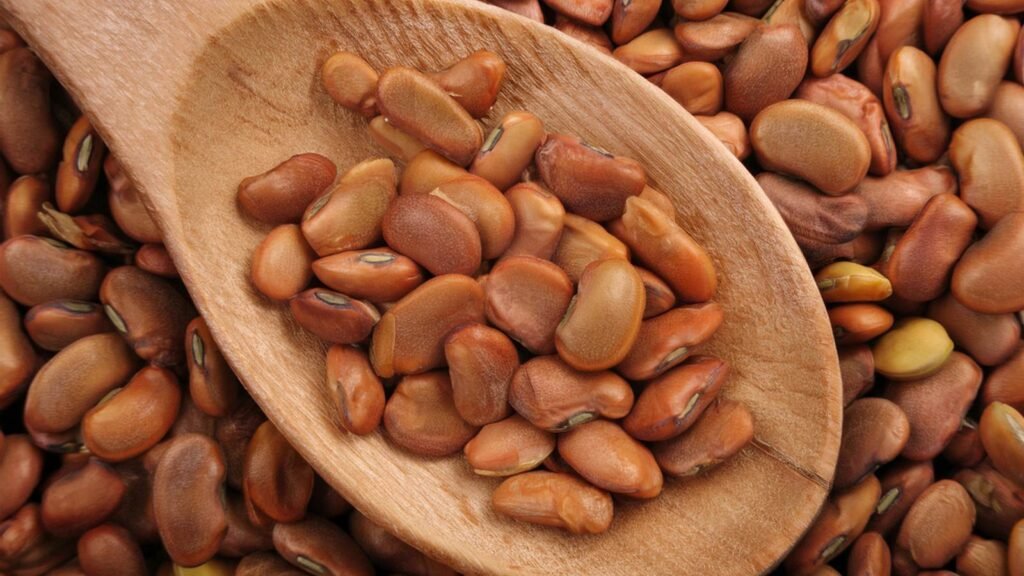
What Are Nitrogen Fixing Bacteria?
Let’s break it down. Nitrogen fixing bacteria are tiny, natural soil microbes that help turn nitrogen from the air into a form plants can actually use. Without them, most of the nitrogen in the atmosphere (which is about 78%) is useless to plants.
But with the help of these bacteria? You’ve got a natural fertiliser factory happening right in your soil.
How do they work?
These bacteria live in the soil or form a close partnership with the roots of certain crops – especially legumes like faba beans, peas, lentils, and clover. This partnership is called symbiosis – and it’s what makes legumes such powerful nitrogen fixing crops.
Here’s how it works:
- The plant invites the bacteria in. The roots release signals that attract the right microbes (like Rhizobium or Bradyrhizobium).
- Root nodules form. The bacteria settle into small nodules on the roots, where they’re protected and fed.
- Nitrogen is fixed. The bacteria take nitrogen from the air and convert it into ammonium – a form plants can absorb and use to grow.
- The plant shares sugars. In return, the plant feeds the bacteria with sugars it makes through photosynthesis.
Win-win.
💡 Why are Nitrogen Fixing Bacteria important?
- They reduce the need for synthetic nitrogen fertilisers
- They improve soil health and microbial biodiversity
- They’re a key part of regenerative and sustainable farming systems
- They help your crops grow stronger, faster, and more efficiently
In short, nitrogen fixing microorganisms are one of the best tools nature gives farmers – and they work even better when supported with targeted solutions like FabaStym.
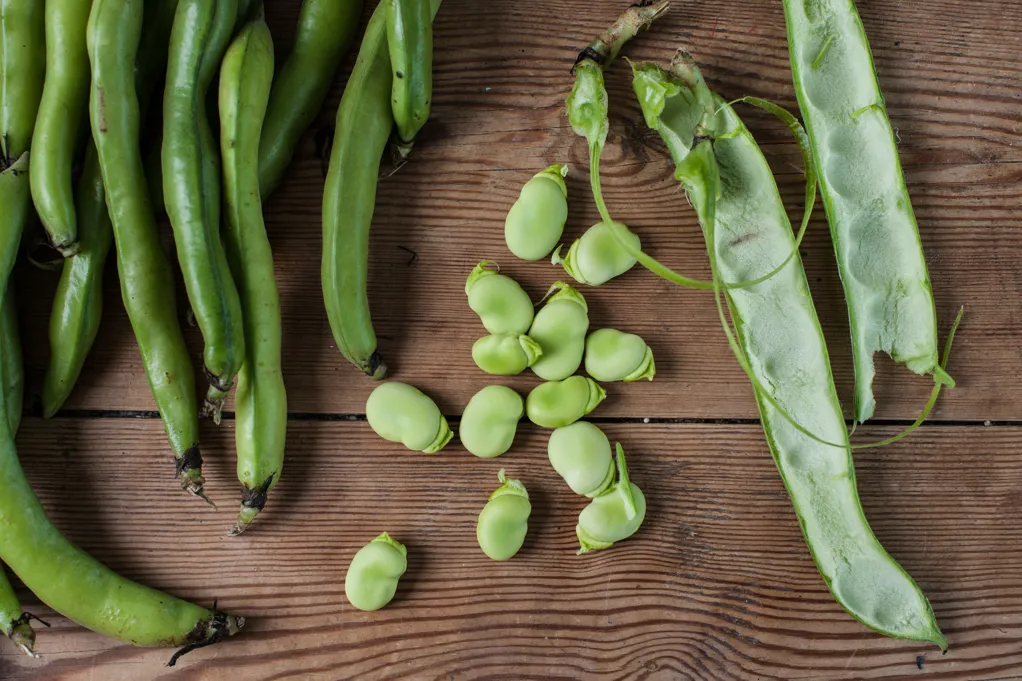
Legumes and Nitrogen Fixing Bacteria: Nature’s Perfect Team
Not all crops are created equal when it comes to fixing nitrogen. Legumes – like faba beans, peas, lentils, soybeans, and clover – have a unique superpower. They can form a partnership with nitrogen fixing bacteria in their roots, turning them into living fertiliser factories.
These are the original nitrogen fixing legumes, and they’ve been helping farmers feed the soil for generations.
How legumes support your soil
When you plant legumes, you’re not just growing a crop – you’re also:
- Adding nitrogen back into the soil
- Feeding beneficial microbes
- Improving soil structure and organic matter
- Reducing the need for chemical inputs in your next crop rotation
This makes legumes some of the most valuable crops that fix nitrogen in any sustainable farming system.
What happens underground?
With the right conditions – and the right symbiotic bacteria – legumes will start forming nodules on their roots. Inside these nodules, the bacteria fix nitrogen from the air, converting it into nutrients the plant can absorb and use to grow.
This means your legumes aren’t just feeding themselves – they’re improving the soil for the crops that follow, making this a win for both yields and long-term soil fertility.
💡 Did you know?
A healthy legume crop supported by the right bacteria can fix up to 500 kg of plant-available nitrogen per hectare – all from the air. That’s a huge saving in fertiliser costs, and a big boost to your soil’s natural fertility.
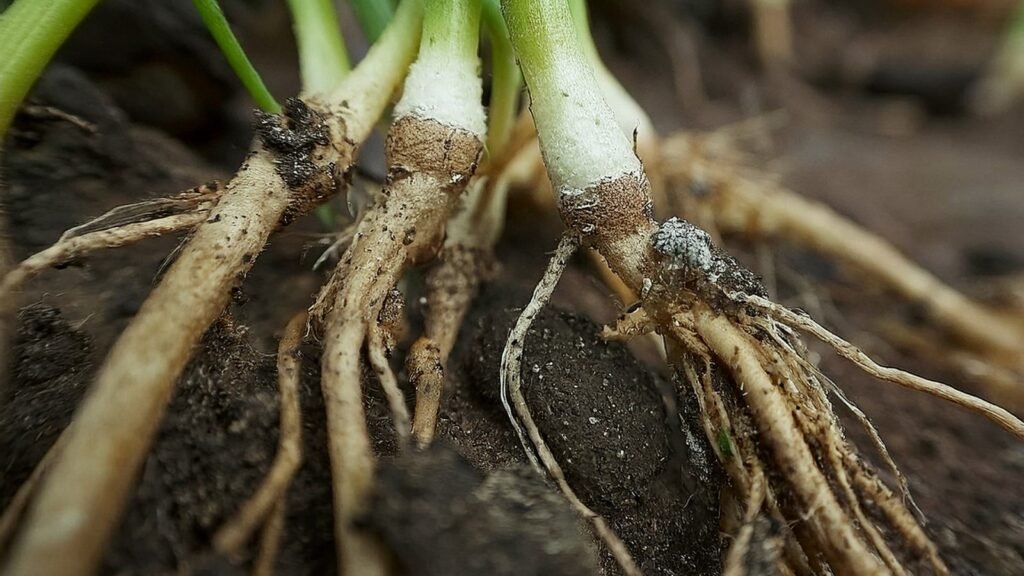
Introducing FabaStym: Support for Nitrogen Fixing Legumes
If you want to get the most out of your legume crops, you need to make sure the right nitrogen fixing bacteria are present, active, and supported in your soil. That’s exactly what FabaStym is designed to do.
Think of it as a soil probiotic – a natural boost that helps your crops and microbes work better together.
What is FabaStym?
FabaStym is a range of microbiological biopreparations made specifically for nitrogen fixing legumes. Each product contains carefully selected strains of symbiotic bacteria that are known to:
- Form strong root nodules
- Efficiently fix atmospheric nitrogen
- Improve nutrient uptake and root development
- Strengthen plant resilience and growth
It’s a clean, eco-friendly alternative to chemical fertilisers – and it works with nature, not against it.

Who is it for?
FabaStym is ideal for farmers growing:
- Faba beans and field peas
- Lupins, lentils, and chickpeas
- Soya and clover
- Any legume-based cover crops or rotational systems focused on improving soil health
Whether you’re trialling regenerative methods or running a large-scale legume operation, FabaStym fits into any soil-friendly farming system.
FabaStym product range:
Each formula is tailored to a specific crop, using the right strains of bacteria that fix nitrogen:
- FabaStym Vicia – for peas and faba beans
- FabaStym Soya – for soybeans
- FabaStym Lupinus – for lupins
- FabaStym Lens – for lentils
- FabaStym Cicer – for chickpeas
- FabaStym Trifolium – for clover
This crop-specific approach ensures better results – and better value – for every farmer.
Why farmers choose FabaStym:
- High concentration of active nitrogen fixing microorganisms
- 100% safe, natural, and biodegradable
- Proven to increase yields and improve soil over time
- Helps reduce fertiliser costs and environmental impact
FabaStym puts the right bacteria nitrogen fixers in the right place – so your legumes can do what they do best.

How FabaStym Works: Fixing Nitrogen the Natural Way
FabaStym helps your legumes do what they’re built to do – fix nitrogen from the air and feed themselves – but in a faster, more reliable, and more productive way.
It’s not a fertiliser. It’s a living microbial booster that gives your crops the exact bacteria they need to fix nitrogen effectively.
The science made simple:
Here’s what happens when you apply FabaStym to your seeds or soil:
- Bacteria bind to the seed or enter the soil
FabaStym delivers high-quality symbiotic bacteria directly where they’re needed – on the seed surface or around the root zone. - Root nodules form early
Once the crop germinates, the bacteria move into the roots and start building nodules – the special homes where nitrogen fixation takes place. - Nitrogen is fixed from the air
These bacteria fix nitrogen by converting it into ammonium, a form your plants can absorb and use to grow. - Plants grow faster, greener, and stronger
With more available nitrogen and better nutrient uptake, your legumes reach their full potential – without relying on synthetic inputs.
🌍 Why it matters:
Using FabaStym not only improves the performance of your current crop – it also helps:
- Build long-term soil fertility
- Reduce your reliance on chemical fertilisers
- Improve microbial activity in the rhizosphere
- Enhance soil biodiversity and structure
- Cut costs while growing more sustainably
In short, it helps you grow more with less – while taking care of your land for the future.
💡 FabaStym supports what fixes nitrogen naturally – making your legumes stronger and your soil healthier with every season.
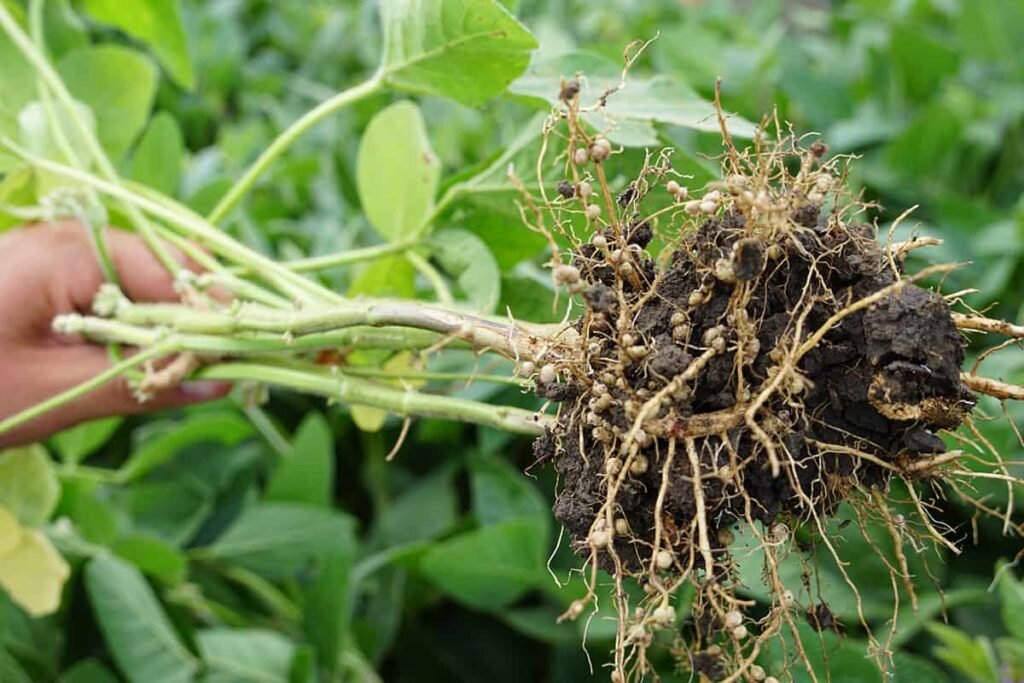
FIVE Benefits of Using FabaStym on Your Farm
When you apply FabaStym, you’re not just helping your crops grow – you’re building a healthier, more productive farm system. By supporting the natural process of nitrogen fixation, FabaStym helps you get the most out of your nitrogen fixing legumes, while reducing your reliance on chemicals.
Here’s what farmers love most about it:
1. Better Nitrogen Fixation = Stronger Crops
FabaStym supplies powerful, crop-specific nitrogen fixing bacteria that boost nodule formation and increase the amount of usable nitrogen your plants receive – up to 500 kg per hectare per year.
- More available nitrogen
- Greener, more vigorous plants
- Better performance even in lower-fertility soils
2️. Healthier Soil with Every Application
Think of FabaStym as a soil probiotic – a way to reintroduce the good microbes your soil needs to thrive.
- Improved microbial biodiversity
- Enhanced soil structure and organic matter
- Long-term fertility that benefits future crops
3️. Bigger Yields and Higher-Quality Produce
Farmers using FabaStym report:
- Increased yield across a variety of legume crops
- Higher protein content in harvested grains
- More uniform growth and earlier root development
- Reduced crop stress during dry periods
Whether you’re growing faba beans, lentils, or soy, FabaStym helps your plants reach their full potential.
4️. Reduced Fertiliser Costs and Environmental Impact
By letting your crops work with bacteria that fix nitrogen, you can:
- Cut down on synthetic nitrogen fertiliser use
- Reduce nutrient leaching and runoff into nearby water sources
- Lower your overall input costs
- Shrink your farm’s environmental footprint
💡 Less fertiliser, fewer emissions, more resilience.
5️. Safe, Natural, and Easy to Use
FabaStym is:
- 100% natural and biodegradable
- Safe for humans, animals, pollinators, and waterways
- Simple to apply with standard seed or soil equipment
It’s a solution that fits into any regenerative or sustainable farming plan.
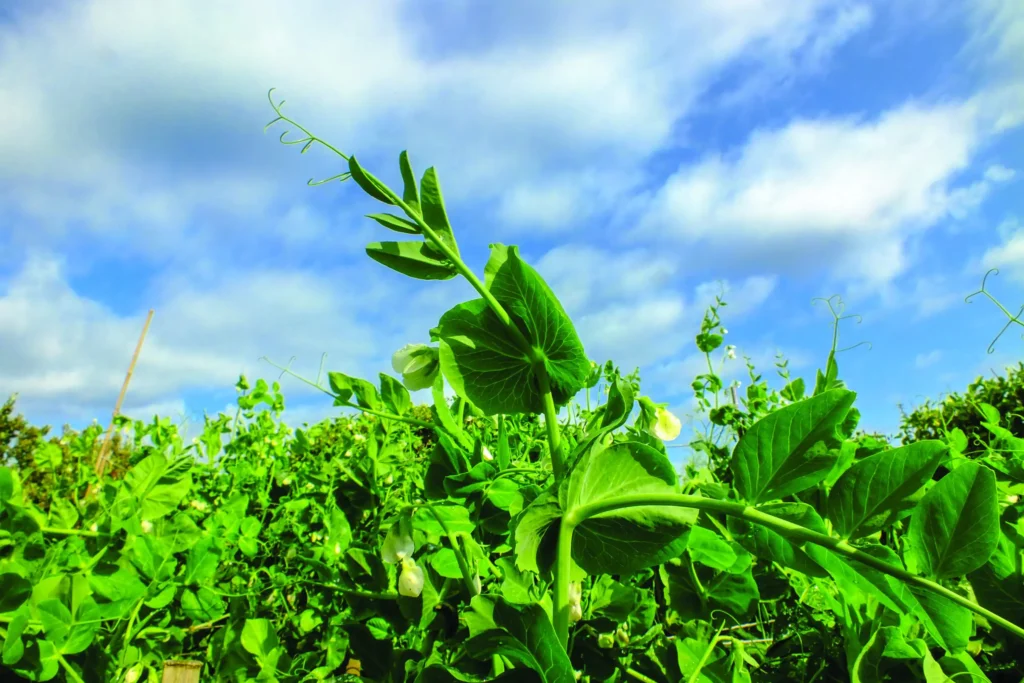
How to Apply FabaStym for Best Results?
Using FabaStym is simple – and it fits easily into your usual farming routine. Whether you’re treating seeds before planting or applying it to the soil, you’ll be giving your legumes the best chance to work with nitrogen fixing bacteria right from the start.
1. Seed Treatment (Pre-sowing)
💡 Best for early root colonisation and strong nodule formation.
How to apply:
- Lightly moisten seeds with clean, non-chlorinated water.
- Add the recommended amount of FabaStym and mix well until seeds are evenly coated.
- Allow the seeds to dry in a shaded area (avoid direct sun).
- Sow as soon as possible after treatment – ideally the same day.
🧤 Use clean containers and tools to avoid contamination of the microbial preparation.
2. Soil Inoculation (In-field Application)
💡 Ideal for larger areas or where seed coating isn’t practical.
How to apply:
- Dilute the FabaStym powder in clean water – check the product label for exact ratios.
- Apply the solution to the soil using a sprayer or irrigation system.
- Apply on moist soil for best microbe activity, and avoid extreme heat or heavy rain immediately after application.
- If possible, gently incorporate into the top layer of soil.
🕒 Timing tip: Apply just before or soon after sowing your legume crops.
Storage & Handling Tips
- Store in a cool, dry place (ideally 4°C to 15°C)
- Do not freeze or expose to direct sunlight
- Use the full packet shortly after opening
- Avoid mixing with strong chemical fertilisers or pesticides during application
Best Practice Summary
- Use non-chlorinated water
- Apply during mild weather
- Don’t combine with incompatible chemicals
- Follow the crop-specific instructions for dose and timing
FabaStym is designed to be easy, flexible, and farmer-friendly – while still delivering big results through bacteria that fix nitrogen naturally.

Frequently Asked Questions (FAQs)
Got questions about FabaStym or nitrogen fixing bacteria? You’re not alone. Here are some of the most common things farmers ask before using soil probiotics like FabaStym in their legume crops.
What crops is FabaStym suitable for?
FabaStym is designed for all major nitrogen fixing legumes, including:
- Faba beans
- Peas
- Lentils
- Chickpeas
- Lupins
- Soya (soybeans)
- Clover and other legume-based cover crops
Each product is tailored to work with specific bacteria that fix nitrogen for each crop type.
Do I still need to use nitrogen fertiliser?
In many cases, no. FabaStym helps your crops produce their own nitrogen through biological nitrogen fixation. This can significantly reduce or eliminate the need for synthetic fertilisers – especially in well-managed systems with healthy soils.
How does FabaStym improve nitrogen fixation?
FabaStym provides high-quality, crop-specific nitrogen fixing microorganisms that support early and strong root nodulation. These symbiotic bacteria convert nitrogen from the air into a form your plants can absorb – fixing nitrogen naturally, without chemicals.
Is FabaStym safe to use on organic farms?
Yes! FabaStym is made from naturally occurring microbes. It’s:
- 100% biodegradable
- Free from synthetic chemicals
- Safe for people, animals, and pollinators
It’s a great fit for organic, low-input, and regenerative systems.
Can I mix FabaStym with other fertilisers or sprays?
You can – but use care. Avoid mixing with strong chemical pesticides or fertilisers that might harm the microbes. If you’re unsure, apply them separately or check compatibility first.
💧 Always use clean, non-chlorinated water when mixing.
What’s the best time to apply it?
FabaStym works best when applied:
- As a seed treatment before sowing
- Or as a soil inoculant just before or after planting
For best results, apply during mild weather and when the soil is moist.
Still have questions?
📬 Get in touch at hello@bactotech.co.uk and we’ll be happy to help.
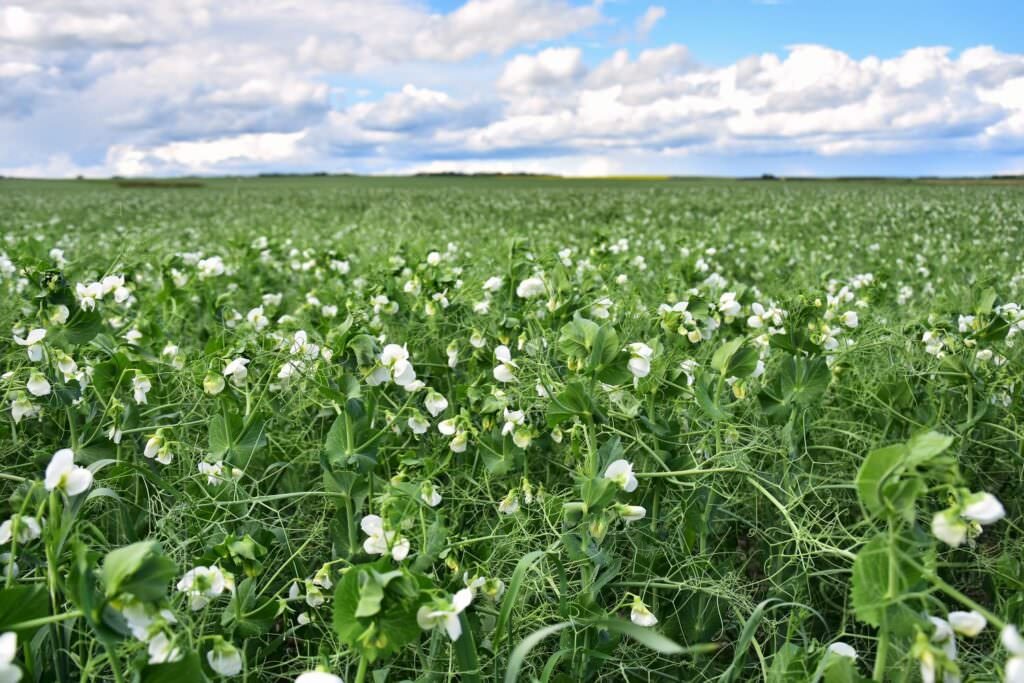
Conclusion: Smarter Farming Starts with Nature
As fertiliser prices rise and soils become more depleted, farmers everywhere are looking for better, more sustainable ways to grow.
That’s where nitrogen fixing bacteria come in.
By working with nature – through crops like faba beans, peas, and lentils, and using powerful, crop-specific solutions like FabaStym – you can improve yields, build healthier soil, and reduce input costs. All while protecting the future of your land.
Why choose FabaStym?
- Contains the right bacteria that fix nitrogen for your legume crop
- Boosts root health, nitrogen uptake, and soil fertility
- Safe, natural, and easy to apply
- Reduces the need for synthetic fertilisers
- Supports long-term regenerative farming goals
Whether you farm 5 hectares or 500, FabaStym helps your legumes fix nitrogen more efficiently – and your soil grow stronger with every season.
Ready to take the next step?
👉 Explore the full FabaStym range here
📩 Contact us for bulk pricing, crop-specific advice, or product recommendations.
📬 Email: hello@bactotech.co.uk
📲 Follow us on Instagram for updates and farmer success stories
🌍 Because when you take care of the soil, it takes care of everything else.

